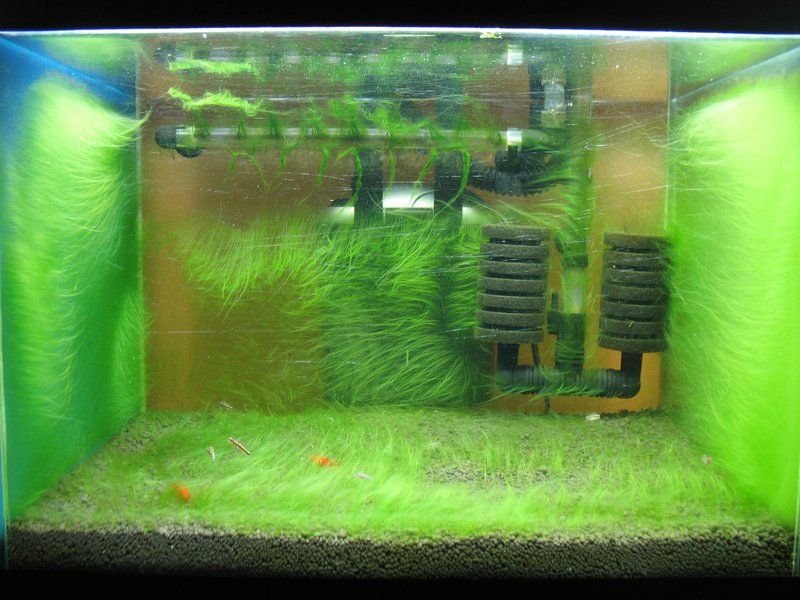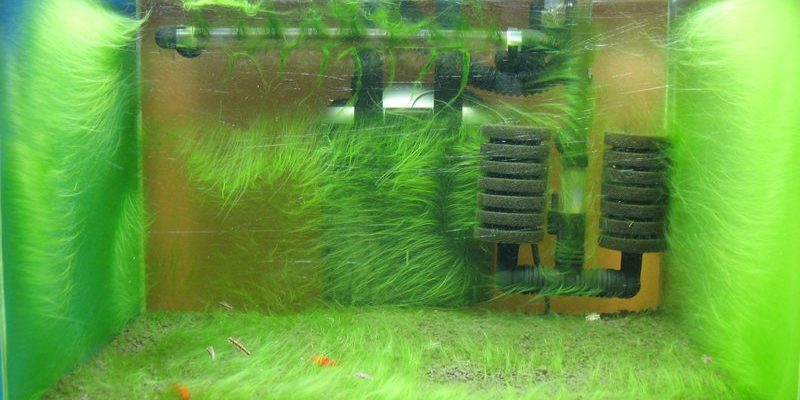
Just as you wouldn’t let clutter pile up in your living room, managing algae in your aquarium requires a bit of regular upkeep. It’s all about finding the right balance between light, nutrients, and water quality. Let me explain a few strategies that can help you maintain that stunning underwater world without the unwanted green guests.
Understanding Algae: The Basics
You might be wondering what algae really is. Algae are simple organisms that thrive in water, much like plants. They can be good or bad; while some types can benefit your aquarium by producing oxygen, others can quickly overgrow, turning that clear water into a murky mess. Imagine they’re the weeds in a beautiful garden—some are fine, but too many can ruin the aesthetic.
The two most common types of algae you might encounter are green algae and brown algae. Green algae often appears as a slimy coating on the glass or decorations, while brown algae can make surfaces look dirty and dull. Understanding the type of algae you’re dealing with helps you figure out the best prevention methods.
Control Your Lighting
Here’s the thing: light is one of the biggest culprits when it comes to algae growth. Just like plants, algae love light and can thrive if given too much of it. If your aquarium’s light is on for 12 to 16 hours a day, you might be giving algae the perfect setup for a party.
To combat this, aim for 8 to 10 hours of light daily. You can achieve this by using timers for your lighting system. These timers ensure your fish get a regular day-night cycle while keeping the algae’s party time in check. Also, remember to use the right type of lighting: LED lights are often more efficient and lessen the risk of excessive algae growth.
Balance Your Nutrients
Nutrients play a significant role in algae growth, especially nitrates and phosphates. These compounds are necessary for the plants and fish in your aquarium, but in excess, they become algae’s best friends.
To keep nutrients balanced, perform regular water changes—about 10-15% weekly is a good rule of thumb. This helps remove excess nutrients that can feed algae. Additionally, consider using a good-quality water test kit to keep an eye on your nitrate and phosphate levels. If you catch them rising too high, you might want to adjust your feeding schedule and use algae-eating fish or invertebrates, like Otocinclus catfish or snails, to help control the situation naturally.
Maintain Good Water Quality
You wouldn’t drink dirty water, and neither should your fish. Poor water quality can lead to all sorts of problems, including algae blooms. Regular testing and monitoring of your aquarium’s water parameters—like pH, ammonia, nitrite, and nitrate levels—are essential.
Investing in a good filter is also vital. A filter helps to keep the water clean, ensuring that any waste or uneaten food doesn’t become a feast for algae. Make sure to clean your filter as suggested in the manufacturer’s instructions; a clogged filter can contribute to water quality issues.
Introduce Live Plants
Think of live plants as the peacekeepers of your aquarium. They consume nutrients that algae would otherwise be happy to use. By adding a variety of plants to your aquarium, you create a natural balance that promotes a healthy ecosystem.
Some great beginner-friendly plants include Java Fern, Anubias, and Amazon Sword. Not only do they help control algae by utilizing nutrients, but they also enhance the beauty of your tank. With a lush green backdrop, your fish will feel more at home, and you’ll have less algae to worry about!
Regulate Fish Feeding
Fish love to eat, but overfeeding is a common mistake that can lead to algae problems. Uneaten food breaks down in the water, releasing excess nutrients that can fuel algae growth.
Make it a habit to feed your fish small amounts that they can consume within 2-3 minutes. If you find leftover food after feeding, it’s better to cut back a little. Remember, a hungry fish is a happy fish, and your aquarium will thank you for it!
Utilize Algae-Eating Species
Sometimes, the best solution is to enlist help. Adding fish or invertebrates that love to munch on algae can be an effective way to manage it naturally.
Siamese algae eaters, plecos, and certain species of snails can do wonders in keeping algae in check. Just ensure that the species you choose are compatible with your current tank inhabitants and that you provide them with a suitable environment. This way, they can help reduce algae buildup without causing other issues in your aquarium’s ecosystem.
Regular Maintenance is Key
Finally, let’s talk about maintenance. Just like your car needs regular oil changes, your aquarium requires consistent care to stay algae-free. This includes routine water changes, filter maintenance, and visual checks for any signs of algae.
Create a maintenance schedule that fits into your weekly routine. Commit to checking water parameters, cleaning your equipment, and doing water changes. Consistency is key in preventing problems before they escalate.
In conclusion, keeping algae at bay in your freshwater aquarium isn’t just about aesthetics; it’s about creating a balanced environment for your fish and plants. By controlling light, balancing nutrients, and performing regular maintenance, you can enjoy a beautiful aquatic scene without the unwanted green guests. With a little knowledge and effort, you’ll be well on your way to becoming a pro at preventing algae in your aquarium!

